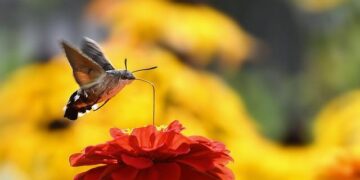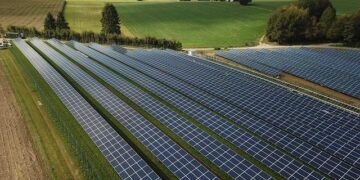New Study Highlights How Habitat Diversity and Algal Growth Shape Malaria Mosquito Larvae in Eastern Ethiopia
In a recent breakthrough published in Parasites & Vectors, researchers have uncovered how habitat heterogeneity and the presence of green filamentous algae play a crucial role in the larval ecology of Anopheles stephensi during the dry season in Eastern Ethiopia. This mosquito species, a prominent malaria vector, has long posed public health challenges in the region. The study sheds new light on how varying environmental conditions influence mosquito breeding, offering vital insights that could inform targeted vector control strategies during periods traditionally seen as low-risk.
Habitat Diversity Shapes Anopheles stephensi Larval Survival in Eastern Ethiopia’s Dry Season
Eastern Ethiopia’s dry season presents a challenging environment for Anopheles stephensi larvae, but new observations reveal that the diversity of aquatic habitats substantially affects their survival rates. Researchers identified that stagnant pools, man-made containers, and slow-moving streams varied in their ability to support larval development, with habitats rich in green filamentous algae showing notably higher larval densities. These algae not only provide a vital food source but also create microhabitats that protect larvae from predators and extreme temperatures, thus enhancing their chances of reaching maturity.
Further analysis highlighted specific environmental variables influencing larval ecology, summarized in the table below:
| Habitat Type | Algal Coverage (%) | Larval Survival Rate (%) | Dominant Vegetation |
|---|---|---|---|
| Stagnant Pools | 70 | 65 | Green filamentous algae |
| Man-made Containers | 45 | 38 | None/Minimal |
| Slow-moving Streams | 55 | 50 | Mixed algae & aquatic plants |
Key factors contributing to larval survival include:
- Presence and extent of green filamentous algae providing nutritional support
- Habitat stability and water permanence during the dry season
- Availability of shelter from predators and environmental stressors
Green Filamentous Algae Found to Boost Mosquito Breeding Sites and Growth Rates
Researchers monitoring mosquito populations in Eastern Ethiopia have uncovered a significant link between the presence of green filamentous algae and enhanced breeding environments for Anopheles stephensi. The algae create complex microhabitats that provide shelter and nutrient-rich surfaces, crucial for larval development during the dry season when water sources are sparse. These filamentous structures trap organic matter and microorganisms, effectively increasing food availability for larvae and accelerating their growth rates. The heterogeneity introduced by the algae not only affects larval survival but also influences the spatial distribution of mosquito breeding sites, promoting clusters of high-density populations in seemingly marginal habitats.
Key factors observed include:
- Improved larval nutrition: Algal mats serve as biofilms laden with bacteria and detritus, vital for larval feeding.
- Protection from predators and environmental stressors: Dense algae offer refuge, reducing predation and UV exposure.
- Enhanced oviposition sites: Female mosquitoes show a preference for laying eggs in algae-rich waters.
| Parameter | Algae Presence | Effect on Larvae |
|---|---|---|
| Growth Duration | High | Reduced by 20% |
| Larval Survival Rate | High | Increased by 35% |
| Oviposition Preference | High | Significantly favored |
Experts Recommend Targeted Habitat Management to Curb Malaria Vector Populations
In-depth field studies conducted across various larval habitats in Eastern Ethiopia have shed light on the crucial role of green filamentous algae and microhabitat variability in shaping the population dynamics of Anopheles stephensi. Experts emphasize that not all breeding sites contribute equally to vector proliferation; rather, specific environmental factors amplify larval survival rates. Targeted interventions focusing on the management of algae-rich microhabitats could significantly reduce mosquito breeding success during dry seasons, when traditional control methods tend to be less effective due to habitat scarcity.
Based on the research findings, specialists advocate for a multi-pronged approach emphasizing habitat modification and ecological precision. Key recommended strategies include:
- Selective removal or alteration of algae-dense breeding spots to disrupt larval nutrition sources.
- Environmental manipulation to reduce habitat heterogeneity, limiting favorable conditions for larvae settlement.
- Community-engaged monitoring programs to identify and manage persistent water bodies supporting larvae.
- Integration of biological control agents that preferentially target algae-growing sites.
| Habitat Feature | Impact on Larval Density | Recommended Action |
|---|---|---|
| Green Filamentous Algae | High (+40%) | Manual removal or biocontrol application |
| Water Stagnation | Moderate (+25%) | Improved drainage |
| Habitat Complexity | High (+35%) | Habitat simplification |
| Sunlight Exposure | Low (-10%) | Vegetative shading |
The Way Forward
As the fight against malaria continues, understanding the intricate relationships between mosquito larvae and their habitats remains crucial. This latest study sheds light on how habitat diversity and the presence of green filamentous algae shape the larval ecology of Anopheles stephensi during the dry season in Eastern Ethiopia. Such insights offer valuable guidance for targeted vector control strategies, particularly in arid environments where traditional approaches may falter. By unraveling these ecological dynamics, researchers are one step closer to disrupting the lifecycle of a key malaria vector, paving the way for more effective interventions in the region and beyond.































